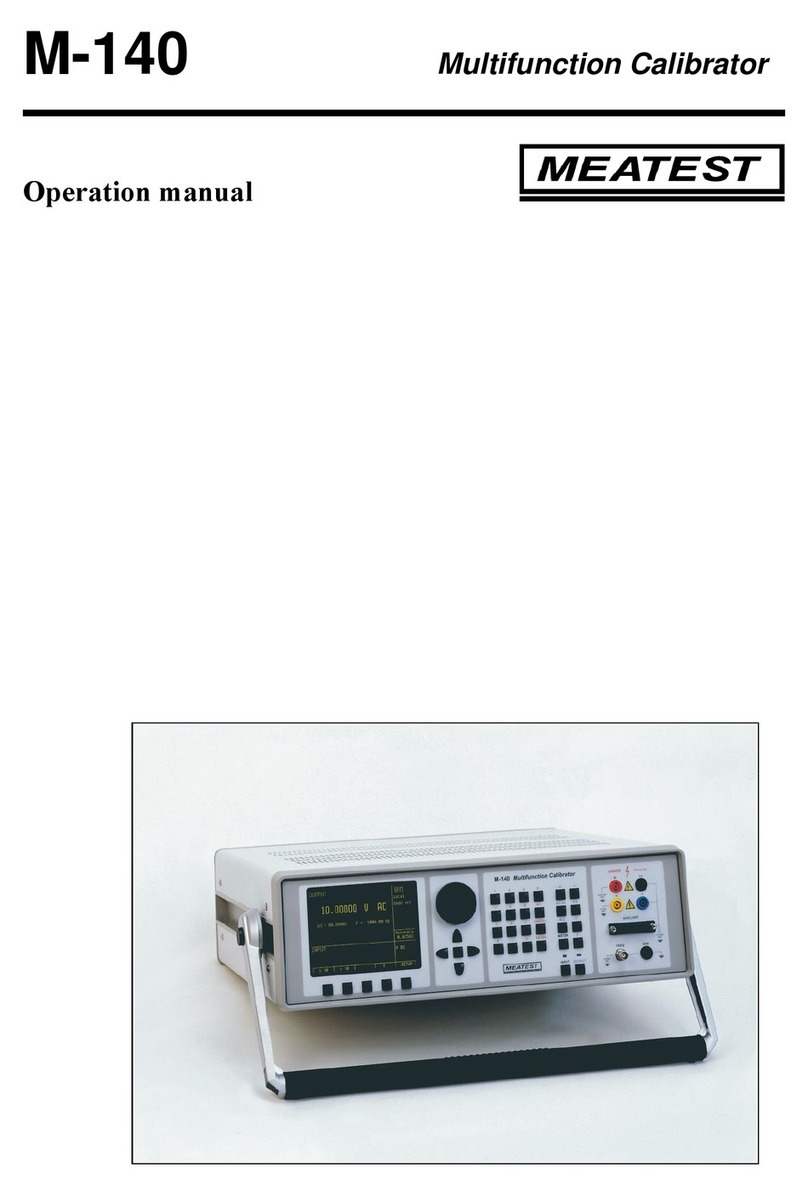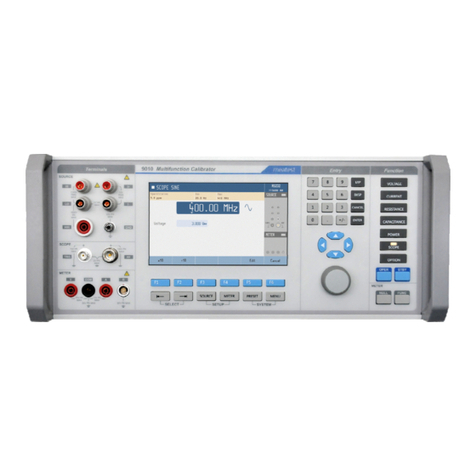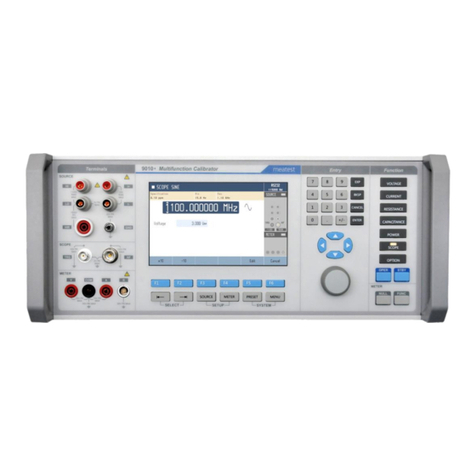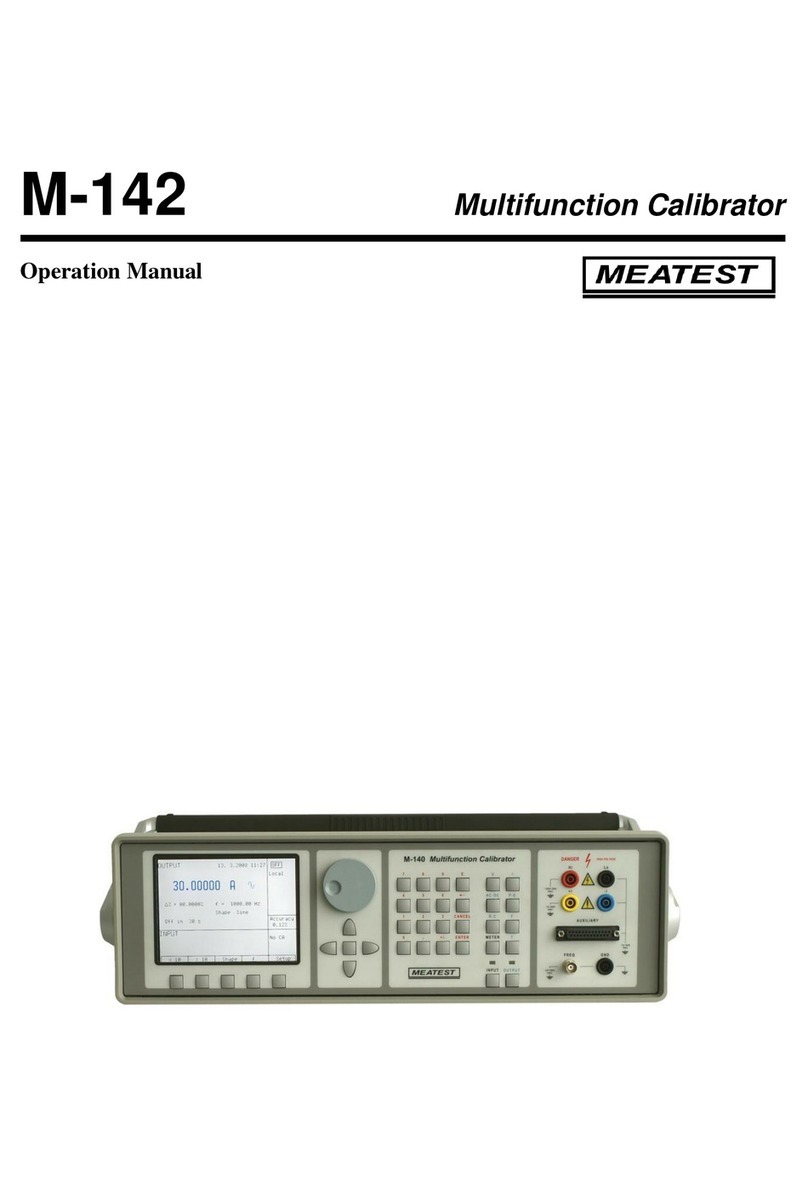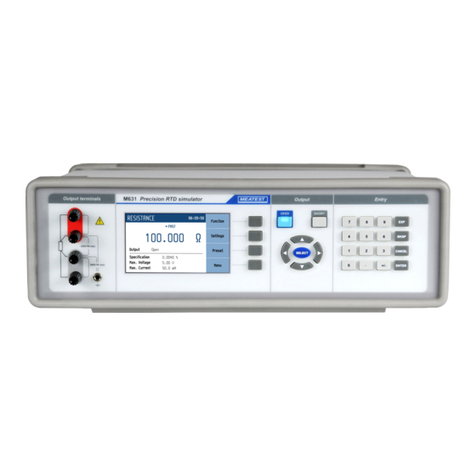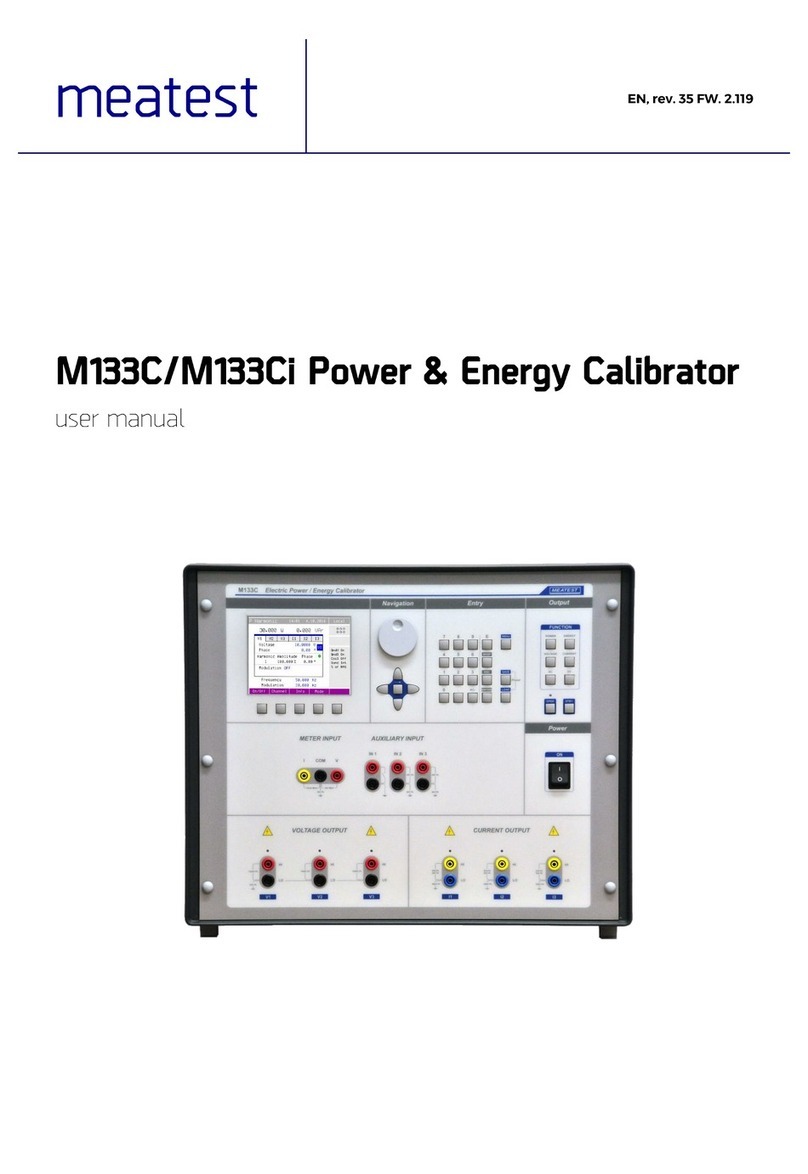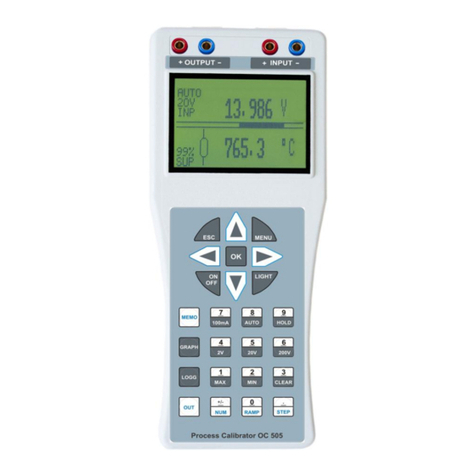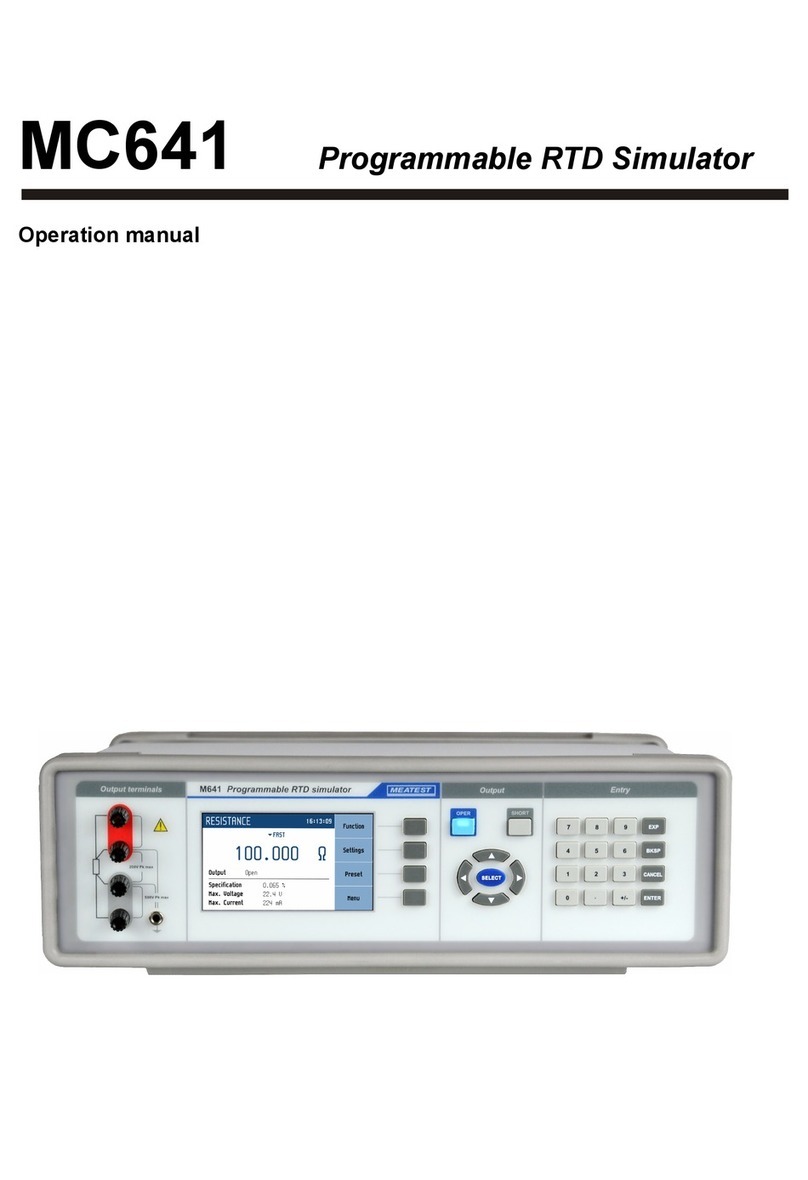The calibrator is designed for operation from 115/230 V –50/60 Hz power line voltage. Before the first
connecting the calibrator to the mains, check the position of the mains voltage selector located at the
rear panel. If the set voltage differs from your power line voltage power line selector must be switched
over as described below:
-Insert flat end of a screwdriver to the slot in power line socket on the rear panel. Wind with the
screwdriver slightly to pull out the holder with fuse and selector contacts.
-Place the contacts in such position, that correct power line voltage can be read in the rear window.
-Push the holder back to the power line socket. In the window correct voltage (115 or 230 V) must
be seen. Use position 115 V for nominal mains voltage 110 to 130 V and 230 V position for range
220 to 240 V.
Plug one end of the power cord into connector on the rear panel and connect the other end of the power
cord into a wall outlet. Turn the calibrator on with mains switch right next to it.
The calibrator works after it is switched on and the initial checks complete. Specified parameters are
only guaranteed after the instrument warms up. During this period, the instrument cannot be calibrated.
The display shows “cannot access the calibration” message if calibration is attempted during this period.
Push FUNC button to see table with available functions. Requested function can be selected using cursor
buttons or directly by pushing numerical button with number of the function, with confirmation by
ENTER. Following functions are available:
1. DC voltage
2. DC current
3. AC voltage
4. AC current
5. Resistance
6. Frequency
7. TC temperature sensor simulation
8. RTD temperature sensor simulation (optionally)
Once a function is selected, you can change the main value as well as auxiliary output parameters
Function parameters can be edited in three ways:
-Numeric keypad. Write a value directly and confirm either by softkey with appropriate unit or
ENTER button to set value in base unit (for example V).
-Cursor keys. Push or buttons to increment/decrement selected digit by one. Move through
parameter digits using < and > buttons.
-Softkeys. Values of most parameters can be also changed by softkeys x10 and :10, which change
value by order of magnitude and +/- softkey which switches polarity or Shape softkey that will
change shape of signal.
Described methods change the main parameter by default. If there are any other parameters on display,
you can switch between them using (SEL) select button.

